In May 2011, STS-134, the second-to-last space shuttle mission and the final flight of Endeavour, delivered the Alpha Magnetic Spectrometer-02 (AMS-02) to the International Space Station. Installed during the end of Expedition 27, the state-of the-art particle physics detector built and operated by an international team of scientists continues to collect data to unlock the secrets of the universe. In particular, AMS-02 seeks to find evidence of antimatter and dark matter. When failures of its cooling pumps threatened the AMS-02’s mission, engineers devised a plan to repair the instrument in orbit although it was not designed for such maintenance. During four complex spacewalks, two astronauts in 2019 and 2020 replaced the cooling pumps, allowing AMS-02 to continue gathering important scientific information.
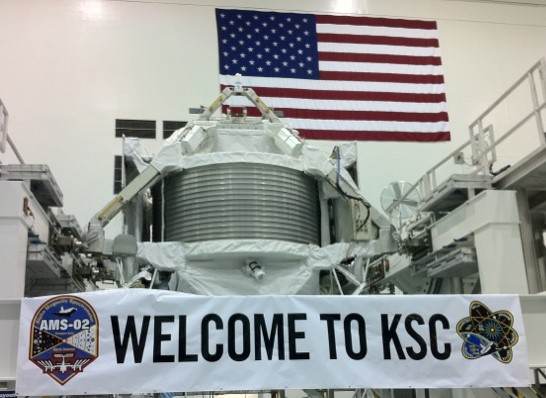
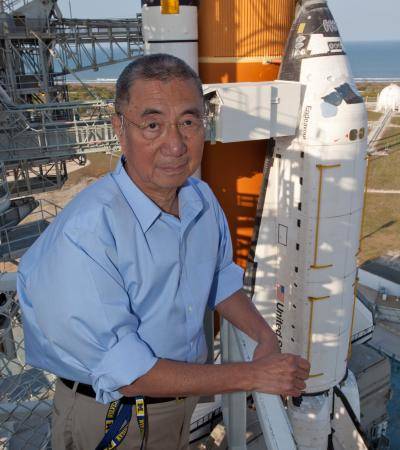
Left: The Alpha Magnetic Spectrometer-02 (AMS-02) shortly after its arrival at NASA’s
Kennedy Space Center (KSC) in Florida for prelaunch processing. Right: AMS-02
principal investigator Professor Samuel C.C. Ting posing in front of space
shuttle Endeavour at KSC’s Launch Pad 39A.
The AMS-02 instrument is a state-of-the-art particle physics detector consisting of a large magnet and multiple detectors. The magnetic field bends the path of particles such as cosmic rays to the array of eight instruments. Scientists analyze the behavior of the particles to seek clues to the existence of antimatter and dark matter – key pieces of the puzzle to understand the origin of the universe. Weighing nearly 15,000 pounds, AMS-02 is the largest single payload on the space station. Principal investigator and Nobel prize-winner Professor Samuel C.C. Ting of the Massachusetts Institute of Technology leads an international consortium of 44 institutions from 15 countries in North America, Europe, and Asia that designed, built, and continues to operate AMS-02. In the United States, NASA and the Department of Energy co-sponsored the instrument. The AMS-01 prototype flew on STS-91 in June 1998 to validate the design of the experiment.
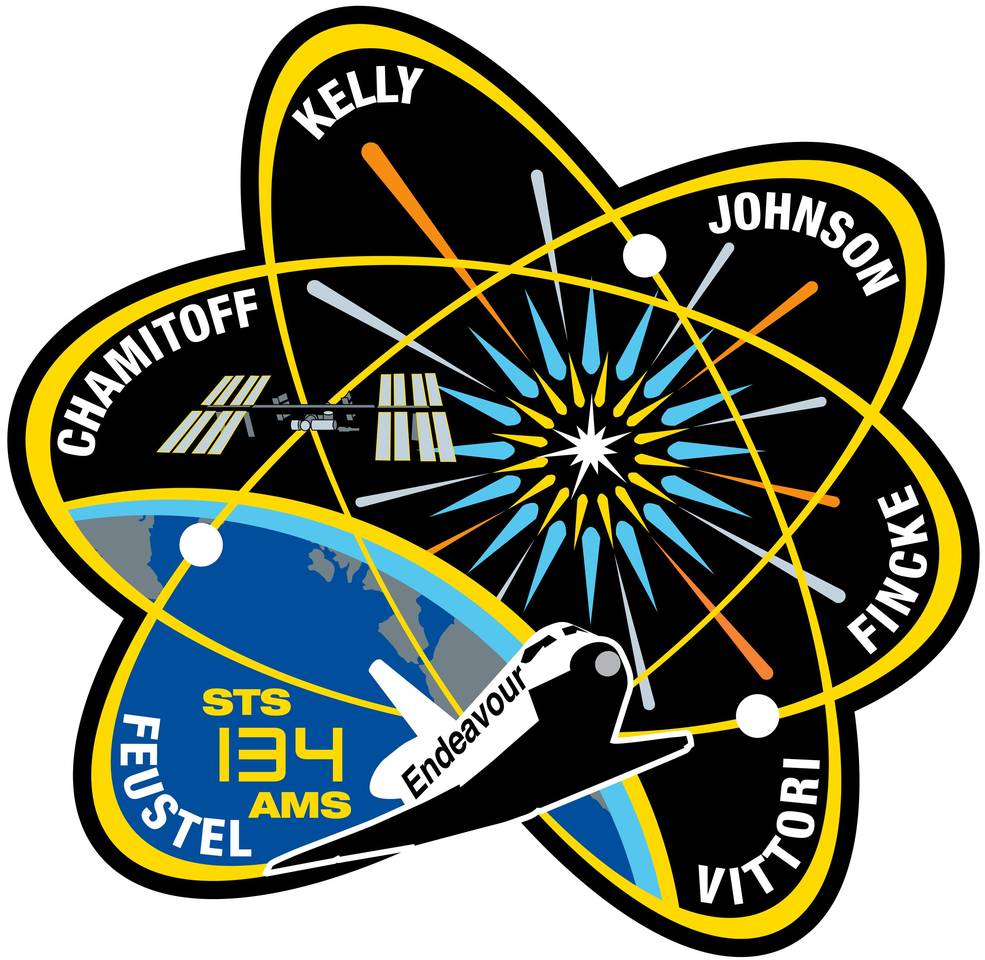
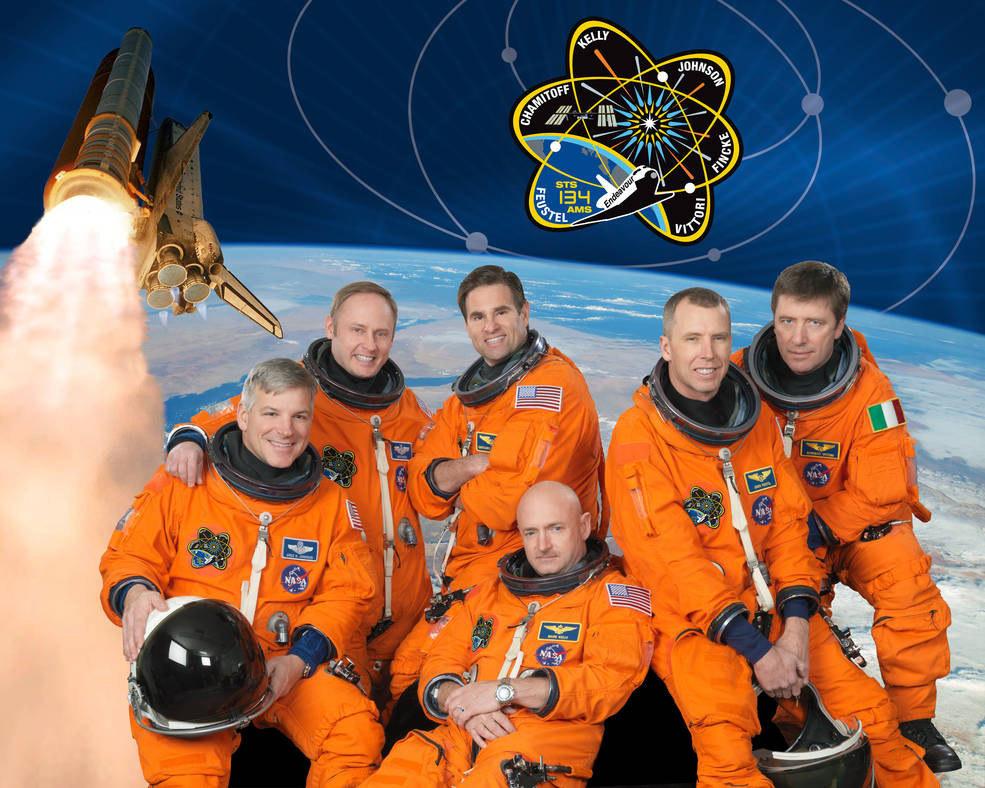
Left: The STS-134 crew patch. Right: The STS-134 crew of NASA astronauts
Gregory H. Johnson, Michael Fincke, Gregory E. Chamitoff, Mark E. Kelly,
Andrew J. Feustel, and European Space Agency astronaut Roberto Vittori.
The second-to-last space shuttle mission, STS-134, and the last flight of the orbiter Endeavour, lifted off from Launch Pad 39A at NASA’s Kennedy Space Center (KSC) in Florida on May 16, 2011. The main objectives for Endeavour’s six-person crew – NASA astronauts Mark E. Kelly, Gregory H. Johnson, E. Michael Fincke, Andrew J. “Drew” Feustel, and Gregory E. Chamitoff, and European Space Agency (ESA) astronaut Roberto Vittori of Italy – included the installation of the AMS-02 payload and the EXPRESS Logistics Carrier-3 (ELC-3) onto the station’s truss and resupplying the facility. On board the orbiting laboratory, the Expedition 27 crew of NASA astronauts Catherine G. “Cady” Coleman and Ronald J. Garan, cosmonauts Dmitri Y. Kondratyev, Andrei I. Borisenko, and Aleksandr M. Samokutyayev representing Roscosmos, and Italian astronaut Paolo A. Nespoli representing the European Space Agency, were ready to assist them. Less than two days after launch, Kelly guided Endeavour to a smooth docking with the station at the Pressurized Mating Adapter-2, located on the forward end of the Destiny U.S. Laboratory module. After they opened the hatches, the 12 members of the two crews held a brief welcoming ceremony. For the first time, two Italian astronauts were in space at the same time, Nespoli and Vittori.
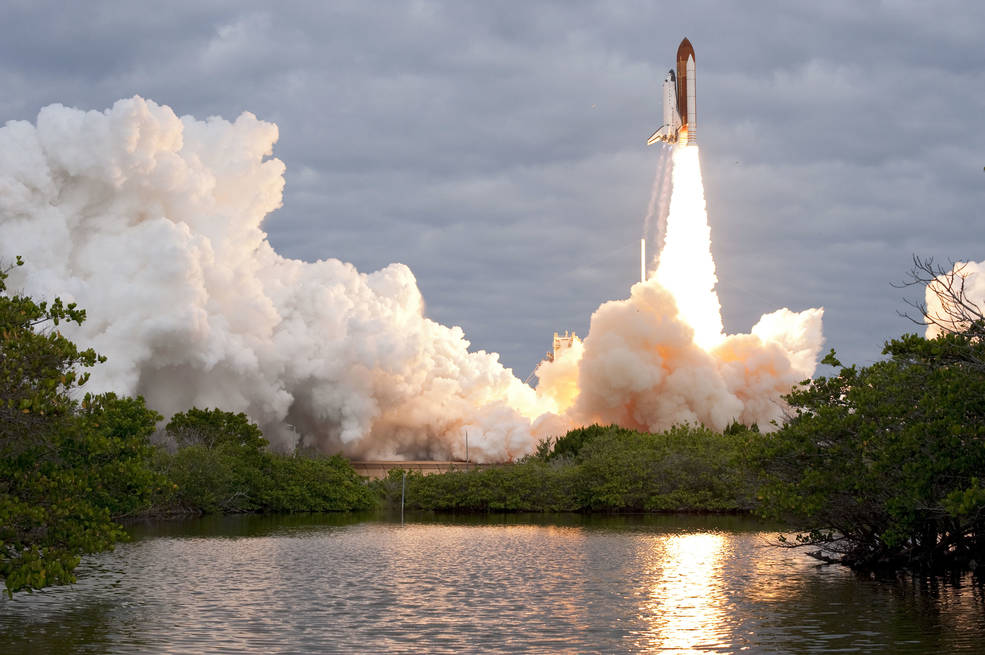
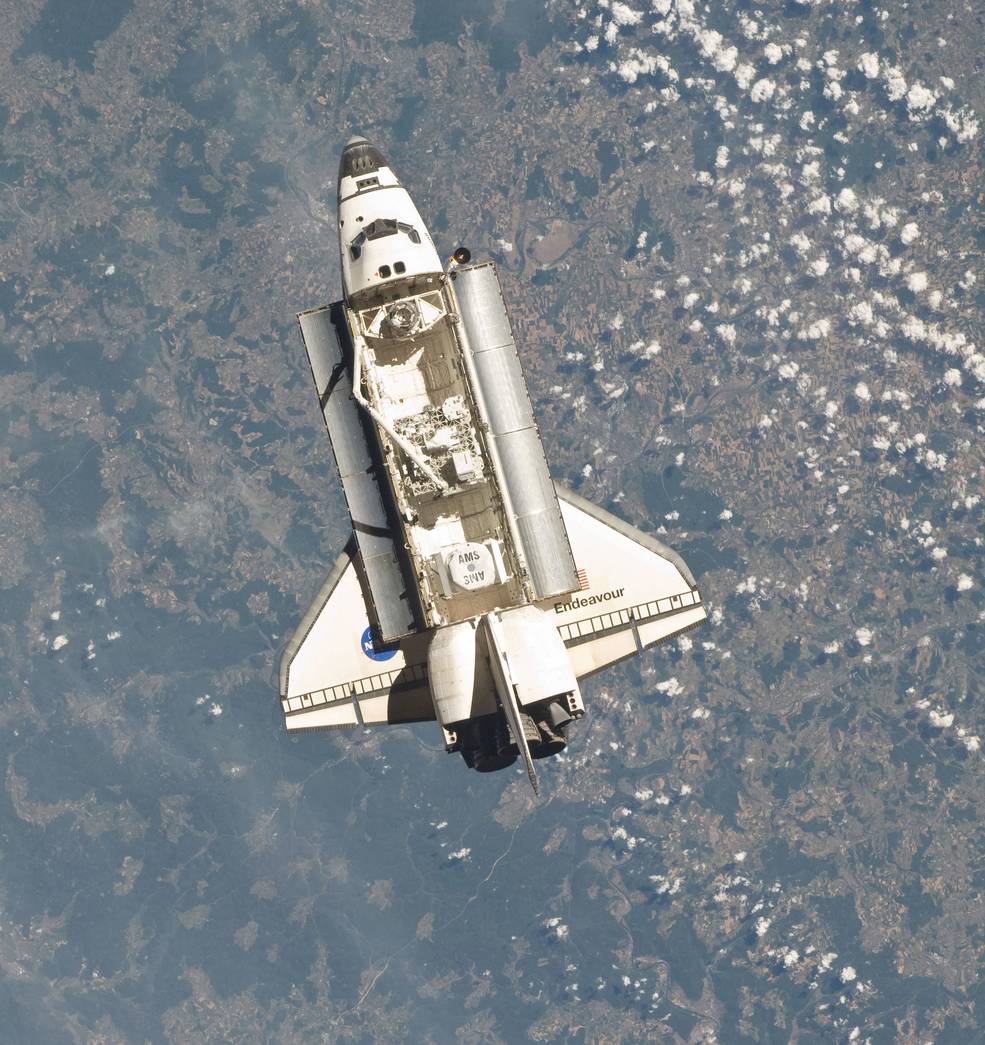
Left: Launch of space shuttle Endeavour on mission STS-134 from NASA’s Kennedy Space Center in Florida. Right: View from inside the space station of Endeavour with the Alpha Magnetic Spectrometer-02 and the EXPRESS Logistics Carrier-3 in the payload bay.
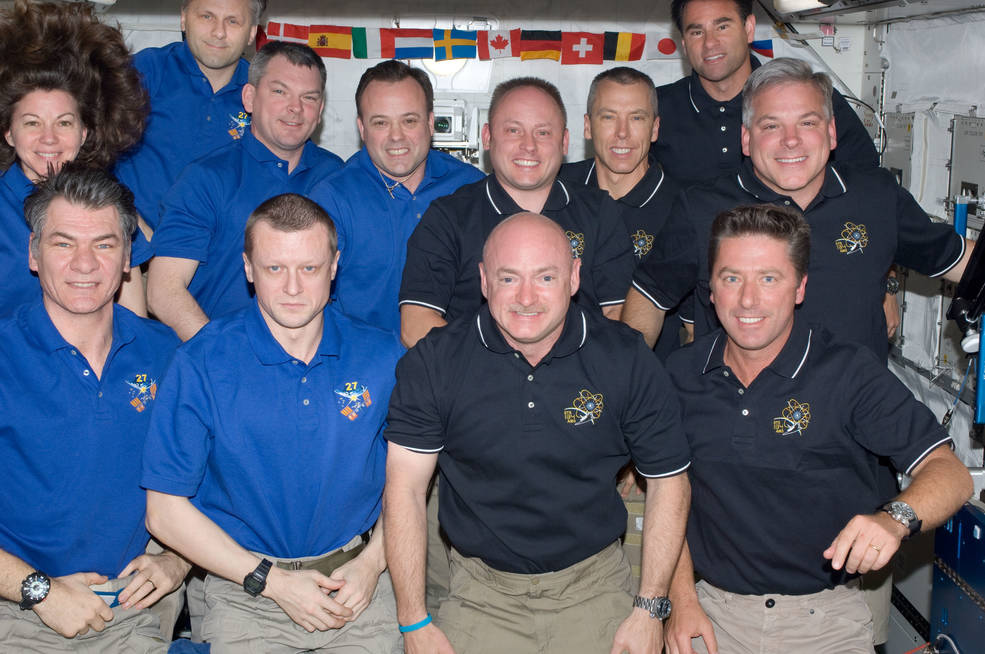
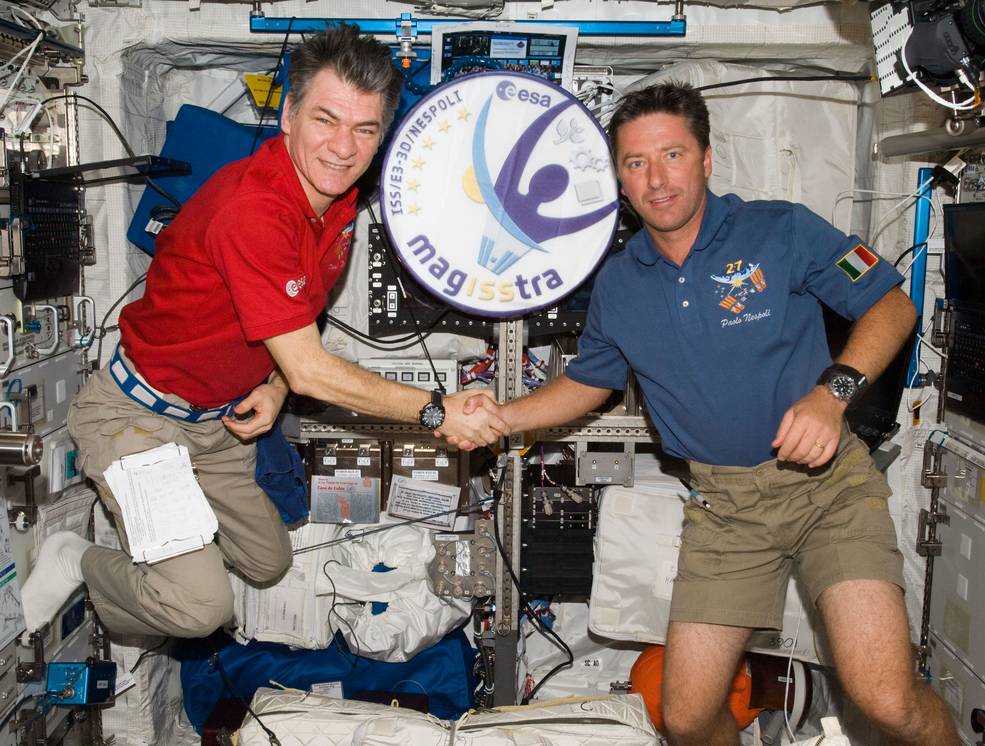
Left: The Expedition 27 and STS-134 crews pose in the Kibo module. Right: European Space Agency (ESA) astronauts Paolo A. Nespoli, left, and Roberto Vittori pose in the ESA Columbus module to mark the first time that two Italian astronauts were in space at the same time.
Shortly after the docking, using the shuttle’s robotic arm, Feustel and Vittori grappled the ELC-3, carrying seven large spare parts for the space station, and lifted it out of the shuttle’s payload bay. They handed the carrier off to the station’s robotic arm, operated by Johnson and Chamitoff, who then attached it to the station’s port-side truss. The following day, May 19, the two teams repeated similar maneuvers with the AMS-02, installing the payload on the station’s starboard-side truss. That same day, controllers on the ground activated AMS-02 and the instrument began collecting data.
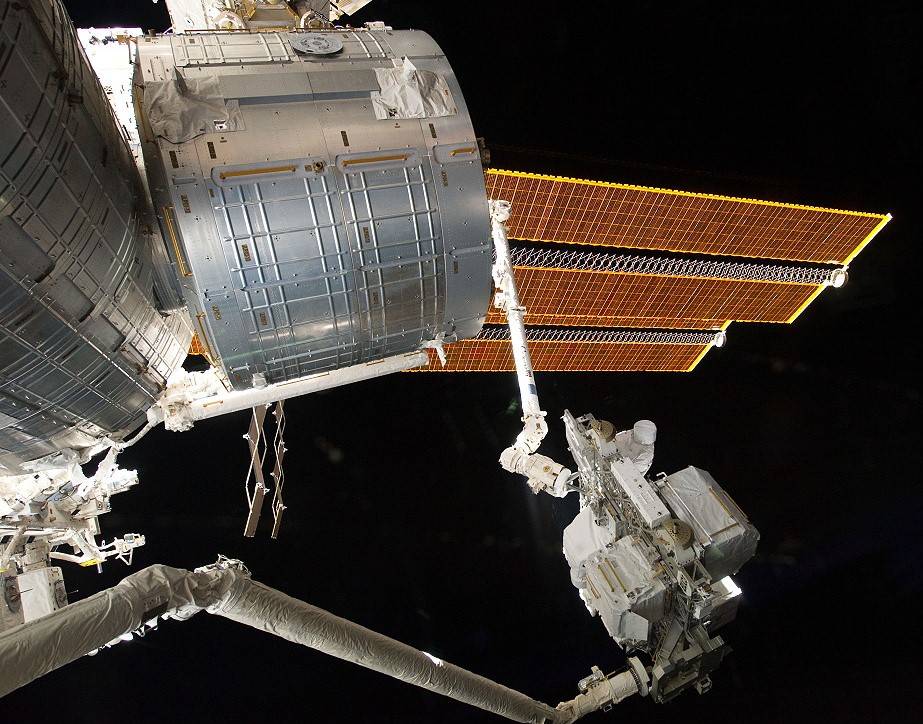
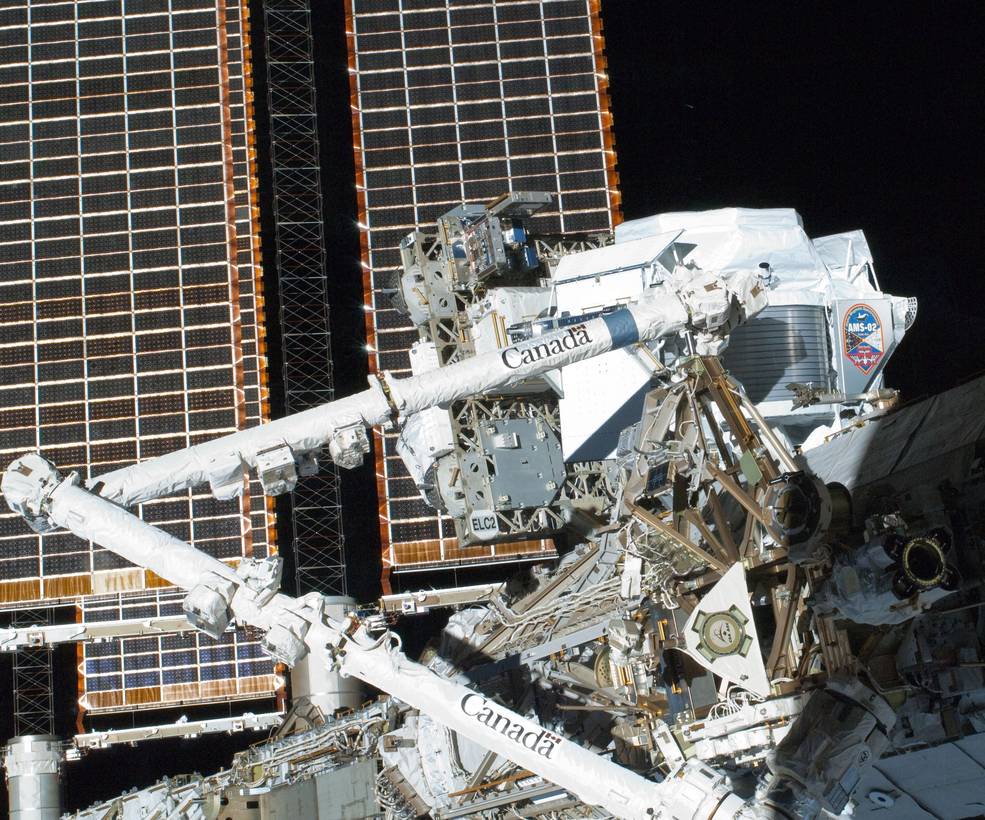
Left: The shuttle’s robotic arm, at bottom, hands the EXPRESS Logistics Carrier-3 off to the space station robotic arm for installation onto the truss. Right: The space station’s robotic arm installing the Alpha Magnetic Spectrometer-02 onto the truss.
On the mission’s fifth day, Feustel and Chamitoff stepped out of the station’s Quest airlock for the first of the mission’s four spacewalks. On this excursion, the two retrieved two experiment packages from the outside of the station, replacing them with a new one, and installed antennas for the external wireless network. They completed the tasks in 6 hours 19 minutes. Two days later, Feustel and Fincke ventured outside for the second spacewalk, lasting 8 hours 7 minutes. They refilled one of the station’s cooling loops with ammonia and lubricated one of the outpost’s solar array joints.
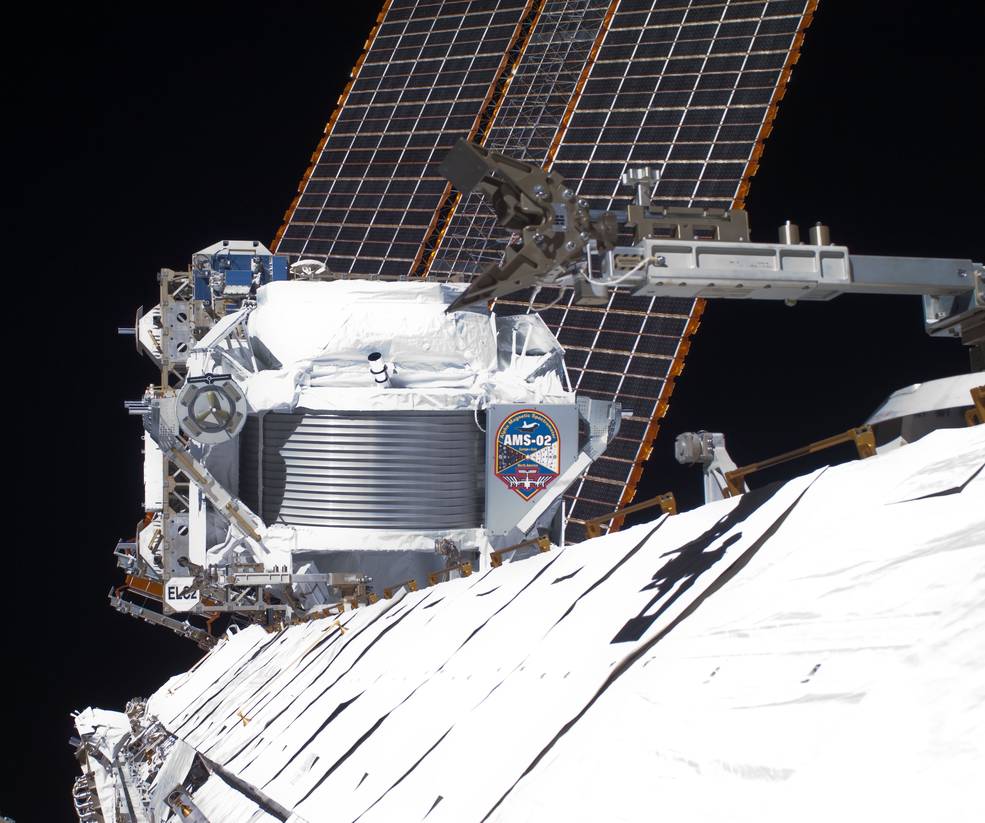
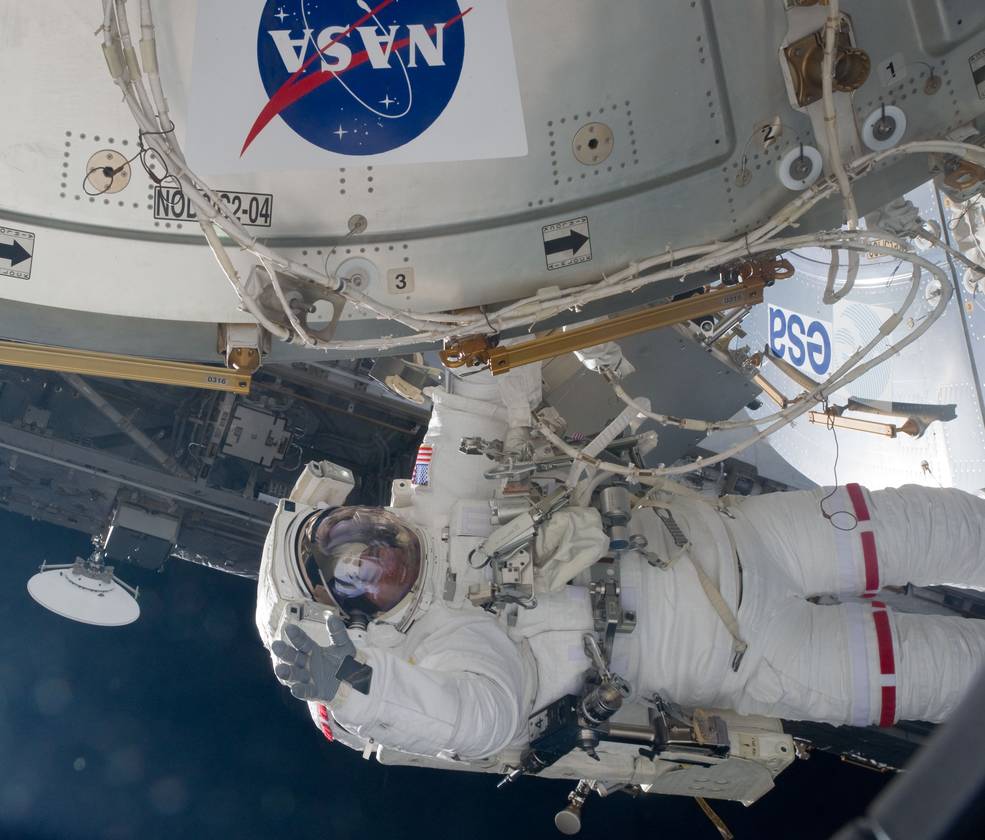
Left: The Alpha Magnetic Spectrometer-02 installed onto the space station’s truss, as seen during the first STS-134 spacewalk. Right: NASA astronaut Gregory E. Chamitoff during the first STS-134 spacewalk, working near the Node 2 Harmony module.
During the night following the second spacewalk, and while the shuttle crew slept, Kondratyev, Coleman, and Nespoli climbed aboard their Soyuz TMA-20 capsule to prepare for their trip back to Earth. After undocking from the station after a 160-day stay, they flew around the facility, taking rare and stunning photographs of the station with the docked shuttle Endeavour. Their departure marked the end of Expedition 27 and the beginning of Expedition 28 aboard the station.
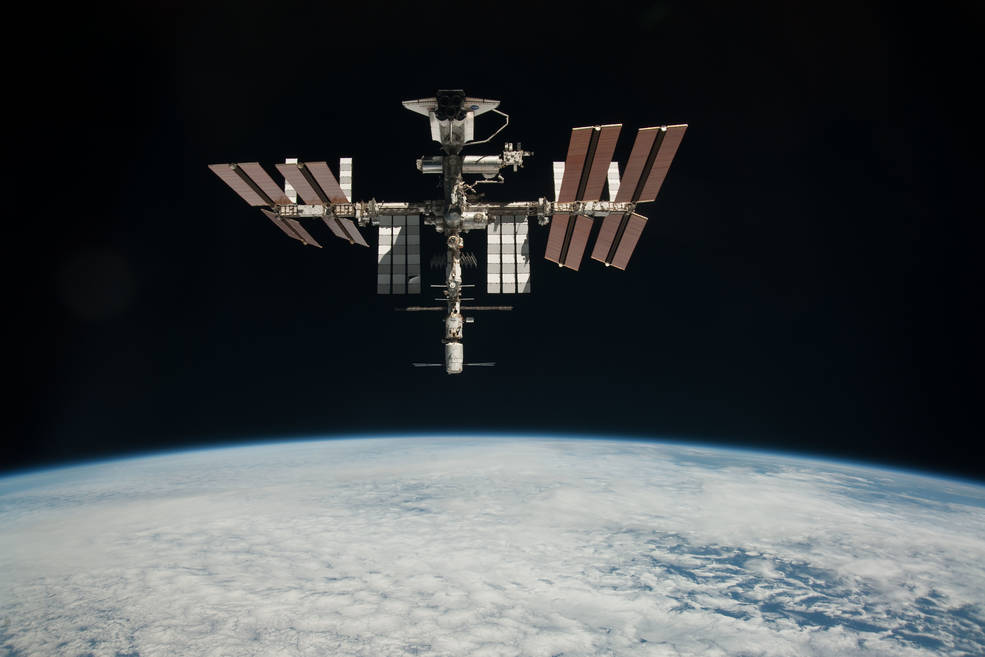
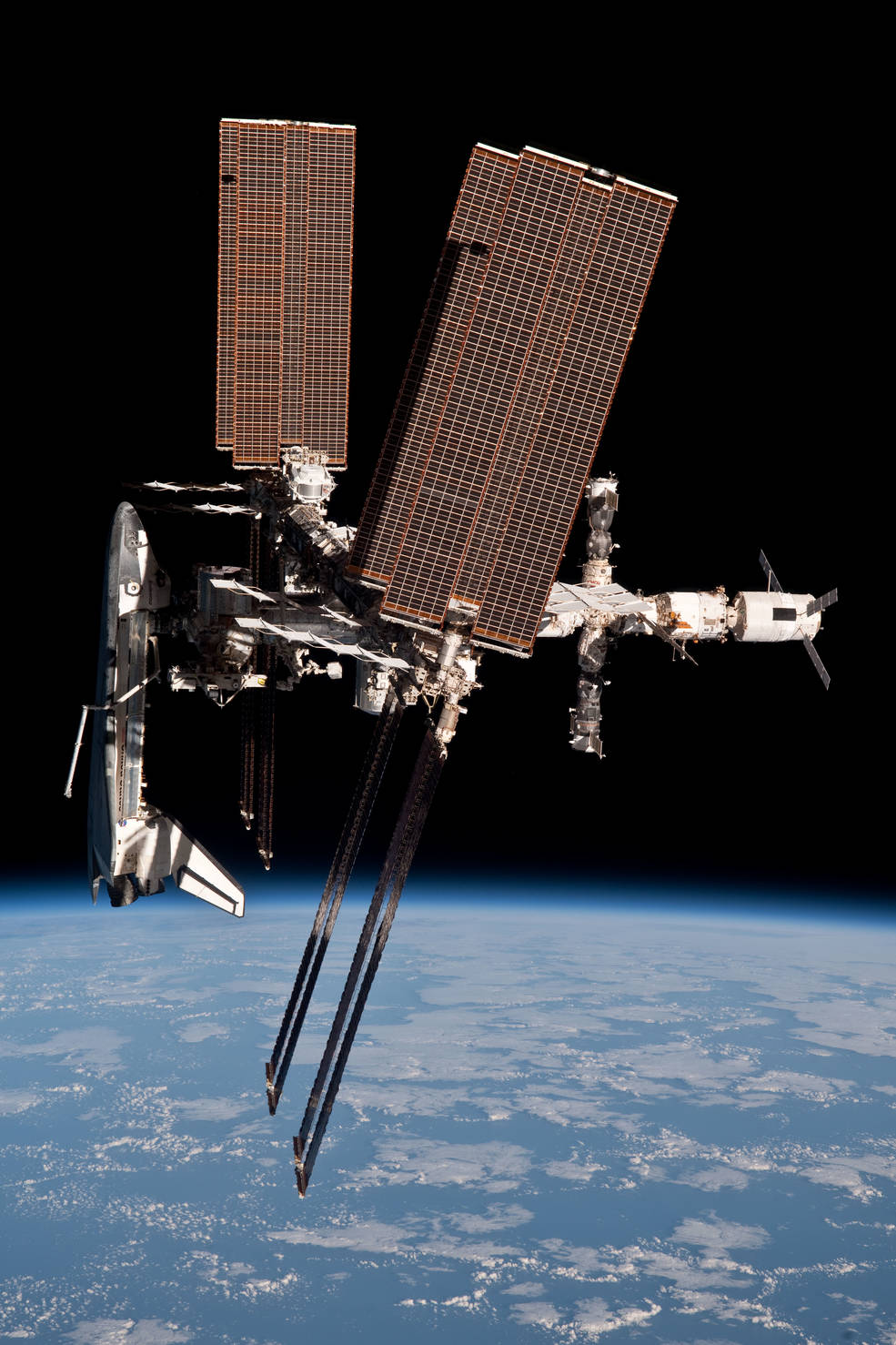
Two views of the International Space Station docked with the space shuttle Endeavour, taken by the departing Expedition 27 crew of cosmonaut Dmitri Y. Kondratyev of Roscosmos, NASA astronaut Catherine G. “Cady” Coleman, and European Space Agency astronaut Paolo A. Nespoli.
Work continued aboard the shuttle-station complex, with the remaining nine crew members proceeding with logistics transfers. On the shuttle mission’s 10th day, Feustel and Fincke completed the flight’s third spacewalk, lasting 6 hours 54 minutes to install a grapple fixture on the Zarya module to enable future robotic activities on the Russian segment. The main task of the fourth and final spacewalk on the flight’s 12th day involved stowing the shuttle’s 50-foot long orbital boom on the space station’s truss. Fincke and Chamitoff completed the activity in 7 hours 24 minutes. For the next two days, the crews focused on internal maintenance activities and on the 14th day, the two crews bid their farewells and closed the hatches between the two spacecraft. The next day, May 30, with Johnson at the controls, the shuttle undocked from the station and performed an inspection fly-around. On June 1, the shuttle fired its orbital maneuvering engines to drop out of orbit and begin the descent back to Earth. Kelly brought Endeavour to a smooth night landing at KSC, ending the 15-day 17-hour 38-minute STS-134 mission.
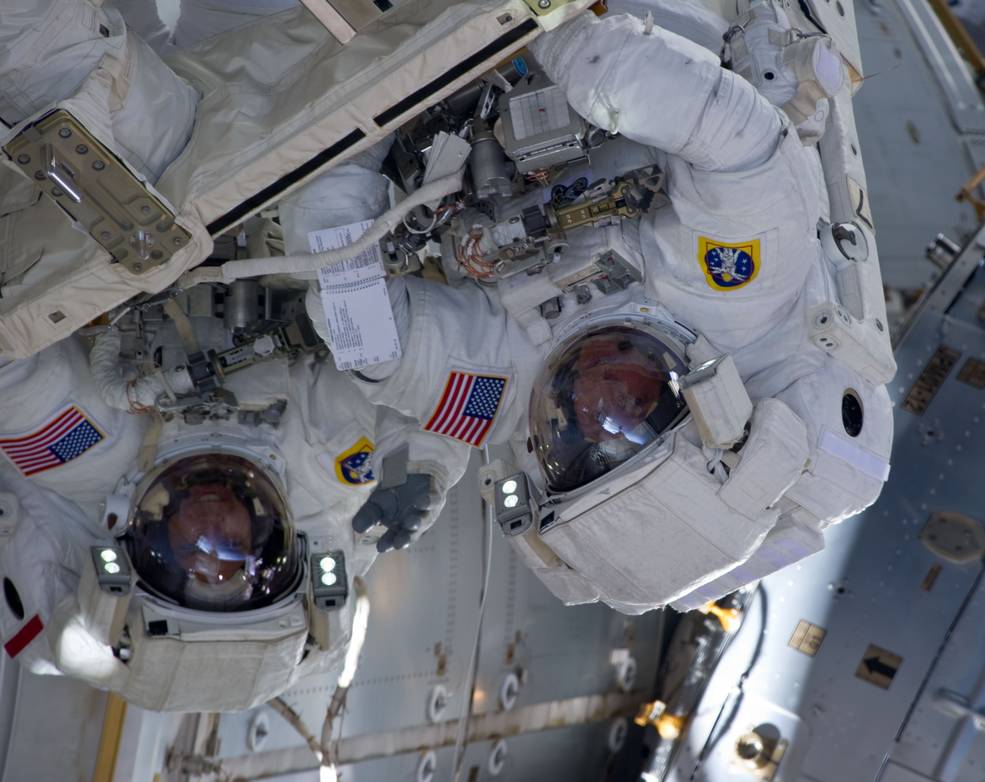
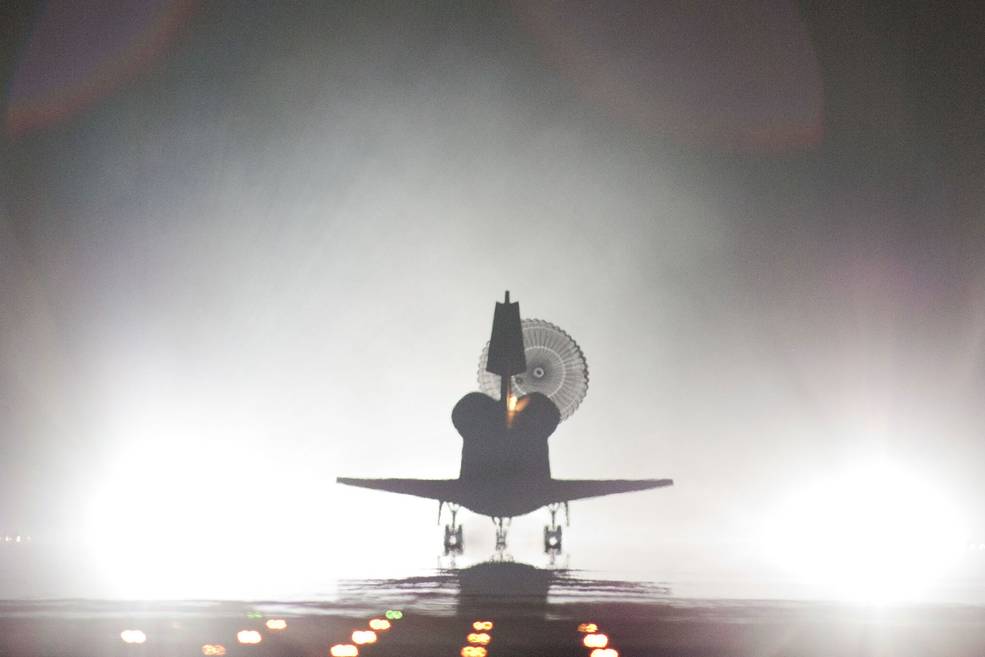
Left: NASA astronauts E. Michael Fincke, left, and Andrew J. “Drew” Feustel during the third STS-134 spacewalk. Right: Space shuttle Endeavour makes a night landing at NASA’s Kennedy Space Center in Florida to end the STS-134 mission.
Meanwhile, the AMS-02 experiment continued collecting data on cosmic rays and other particles in its search for antimatter and dark matter in the universe. The hardware continued to function well until its redundant coolant pumps began to fail. By April 2017 only one of the four coolant pumps was fully working, and engineers began to plan for on-orbit repairs, even though AMS-02 was not designed to be serviced in space. By 2019, the last pump was being operated intermittently. In November 2019, after four years of planning, special tools and equipment were sent to the space station to complete the repairs described as the most challenging since the repairs to the Hubble Space Telescope. Expedition 61 crew members NASA astronaut Andrew R. “Drew” Morgan and ESA astronaut Luca S. Parmitano of Italy conducted the repairs during four complex spacewalks between November 2019 and January 2020, spending 25 and a half hours outside the station. Fellow Expedition 61 crew members NASA astronauts Christina H. Koch and Jessica U. Meir operated the station’s robotic arm to assist Morgan and Parmitano. The repairs allowed the AMS-02 to continue its science observations as a permanent installation on the space station. The instrument has registered nearly 180 billion cosmic ray events so far, and numerous scientific publications have resulted from its observations.
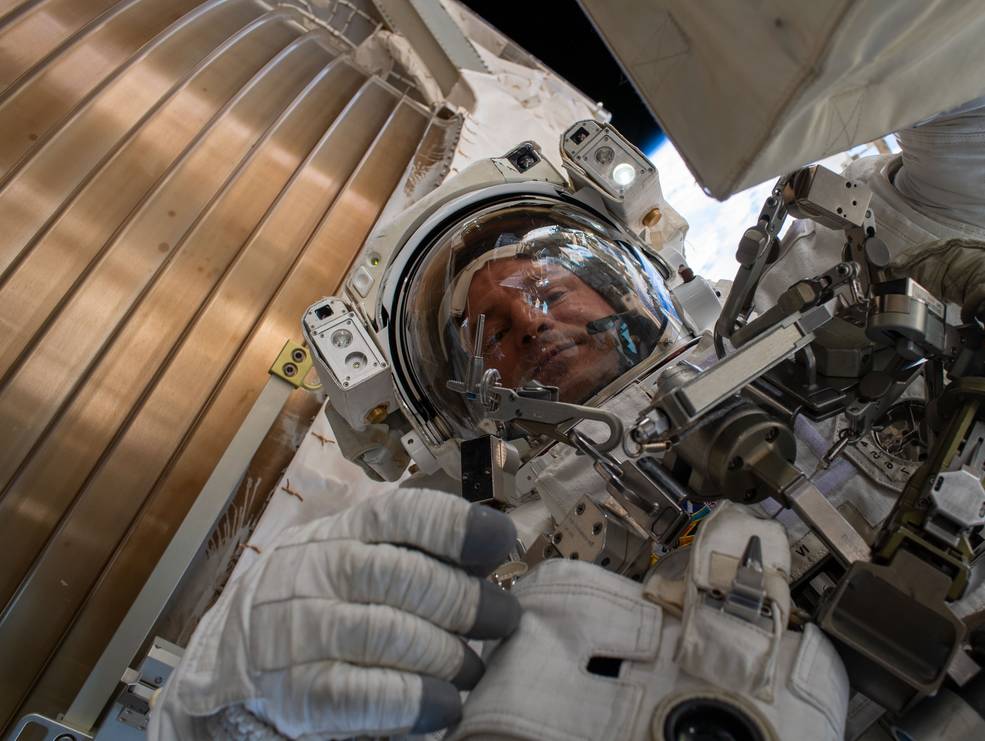
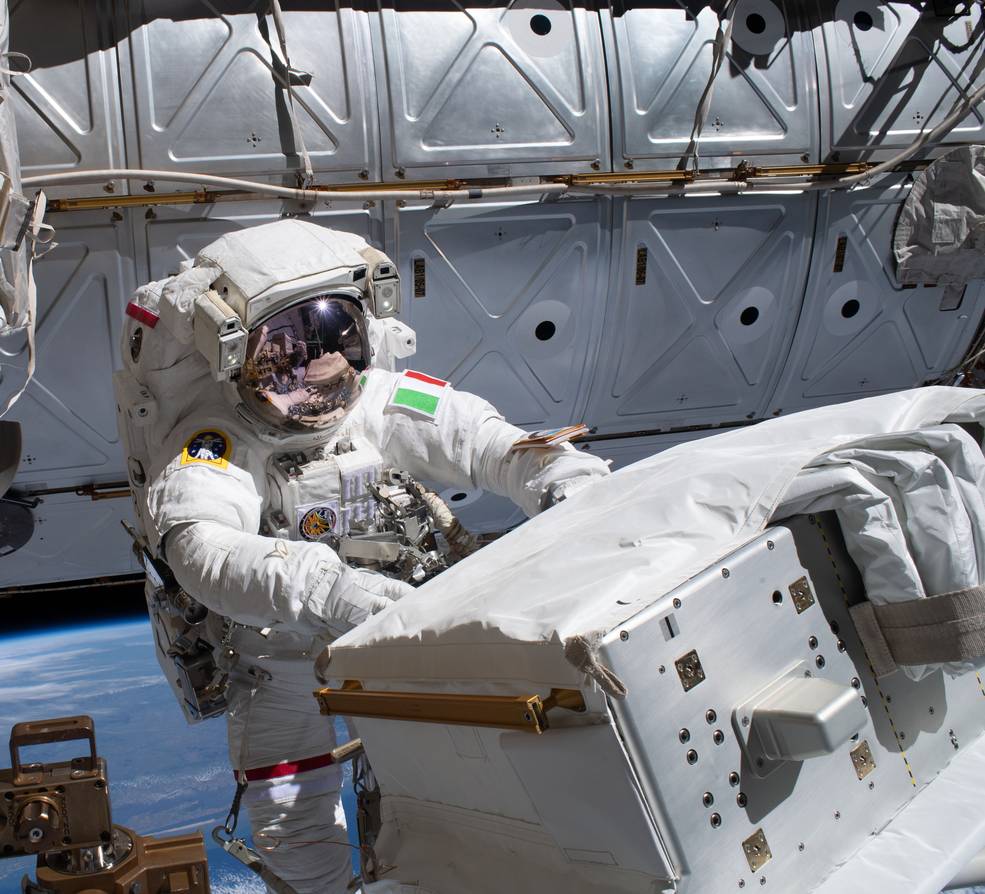
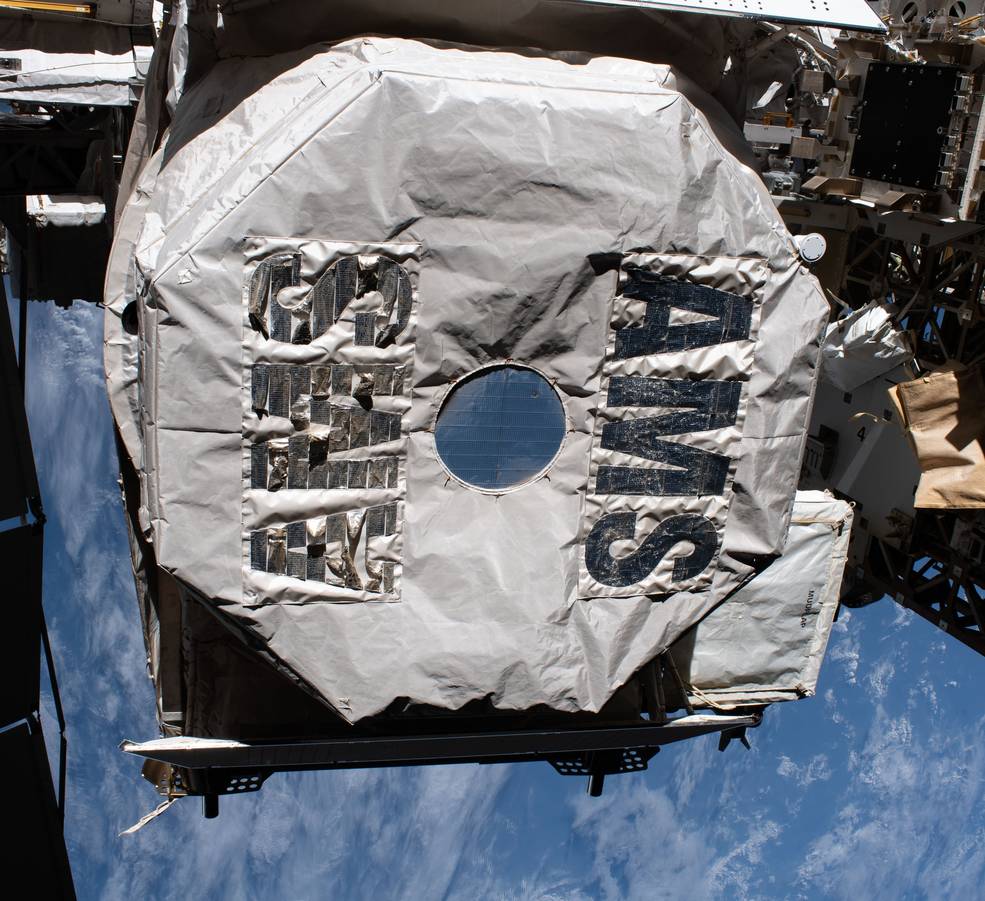
Left: NASA astronaut Andrew R. “Drew” Morgan during the first of the four spacewalks to repair the Alpha Magnetic Spectrometer-02 (AMS-02). Middle: European Space Agency astronaut Luca S. Parmitano carrying the new cooling pump module during the third AMS repair spacewalk. Right: The repaired AMS-02 photographed during the fourth and final repair spacewalk.
Enjoy this video about the STS-134 mission.
























